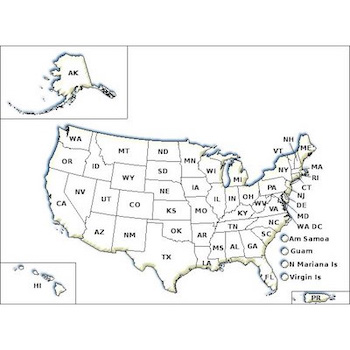Fire ants are extremely aggressive when bothered, and they may sting repeatedly. When stung, people may also experience itching, followed by the appearance of a white, fluid-filled pustule. Sensitive people may also have swelling, chest pain, difficulty breathing, nausea, and sweat after being stung. If this happens, get emergency medical treatment immediately. Call 911 or a Poison Control Center at 1-800-222-1222.
Fire ants were introduced into the United States in the 1920's and 1930's. Now they are considered an invasive species in the southern states from Virginia to New Mexico, as well as California and Puerto Rico. Therefore, all areas where fire ant activity has been reported are under a quarantine regulated by the USDA.
Control tips:
- Regularly empty outside trash cans near buildings and in parks to keep fire ants from finding food.
- Keep plants trimmed away from buildings to keep fire ants from using the plants as a bridge to the building.
- Fire ants like greasy and oily foods, especially cat and dog foods. Take steps to keep ants from having access to pet foods.
- Knocking down a mound repeatedly can cause it to move away from a sensitive site, such as a garden or playground.
- Pesticides can be applied to individual ant mounds, or using a broadcast approach that involves treating a larger area.
- Always read and follow label directions for any pesticide product.
- Baits are available which have the potential to be carried into the colony by worker ants. This may eventually kill the queen.
- Fire ants often infest electrical equipment. For safety reasons, only a licensed pest control operator or an electrician should treat fire ants in or near these areas.
If you have questions about this, or any pesticide-related topic, please call NPIC at 800-858-7378 (8:00am - 12:00pm PST), or email us at npic@oregonstate.edu.
Last updated October 14, 2025
- Identify the ant
species before moving forward. Control techniques are different
for carpenter ants and other ants.
- Finding the nest is the key. Follow trails to find the mound.
- Fire ants eat greasy or oily materials. Keep trash cans covered,
and pet food inaccessible.
- Knocking down a fire ant mound repeatedly can cause it to
move.
- Mounds can be scalded with very hot water or treated with
pesticides.
- Baits are available that can be carried into the colony by worker
ants. This can eventually kill the queen.
- Find out if your community has a program to manage fire ants.
- Keep plants trimmed away from buildings. They can serve as a fire
ant bridge to the building.
- If you have infested electrical equipment, get an expert
involved. Consult an electrician or pest management
professional.
If you choose to use a pesticide, read the label before you buy. Try a lower toxicity
product first.
If you have a pesticide product in mind, have your label handy and click here for information about that product.
These images are graciously allowed to be used by NPIC by Bugwood.org. Images included in the Bugwood Network Image Archives (ForestryImages.org, IPMImages.org, Invasive.org, and InsectImages.org) are made available under a Creative Commons license. Individual photographers retain all rights to images included in the archive.
Through its county agents, the Cooperative Extension Service gives individuals access to the resources at land-grant universities across the nation. These universities are centers for research in many subjects, including entomology (the study of insects) and agriculture. Each county within the United States has an Extension office, which is staffed with agents who work closely with university-based Extension specialists to deliver answers to your questions about gardening, agriculture, and pest control.



